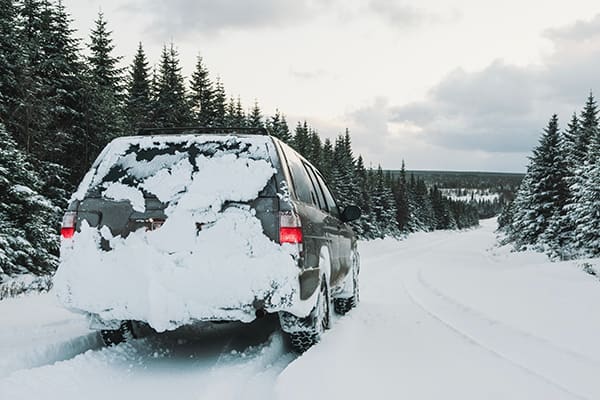You're out on your summer road trip, driving 150 miles from nowhere. Suddenly, your tire-pressure light turns on, and the vehicle starts wobbling, signaling you've popped a tire. Swapping on a spare should be easy, but unfortunately, around 30 percent of new cars don't come with spare tires anymore. Here's what you can do before your summer road trip to make blown tires a non-issue.
Call for help
Most new vehicles usually have complimentary roadside assistance and maintenance. Call the hotline and wait for a free tow or repair on the side of the road. That's a great service for your brand-new Ford Mustang, but less great for your classic Mustang. And, while convenient, the downsides are paying for another subscription service and possibly waiting several hours for assistance when you are out exploring old Route 66.
Swap tires
Another option available at the factory, and available for you on the aftermarket, are run-flat tires. I know they're not an enthusiast favorite, but hear me out. Run-flat tires are designed to take a puncture to the tread, lose air pressure and allow you to keep driving. Your tire pressure monitoring system will alert you with a tire psi warning light on the dash, letting you know you have about 50 miles to reach a tire repair center before the tire fails.
The huge bonus here is the ability to keep going and make it to your destination or a safe place to pull over, instead of stopping in an unsafe area like a small shoulder or, even worse, in traffic. The downside to run-flats are the pricier cost of the tires due to more robust and complex construction techniques, higher noise levels, sometimes poorer ride quality and generally lower grip than summer performance tires. Run-flats, like regular tires, will fail quickly if the sidewall is damaged.
So why did an old Chevy Cavalier from 20 years ago get a spare tire, but your fancy new Acura RLX doesn't have one? As fuel economy standards increased, automakers decided to shed excess weight. Removing the spare tire, jack and lug wrench saves 40 to 50 pounds. While 50 pounds doesn't sound like much in a 3,800-pound car, every bit adds up; it also lets them save on assembly costs and the cost of the spare tire and tools.
Buy or build a kit
If you don't have a spare tire or run-flats, odds are you have an emergency tire inflation kit. Check your manual or trunk for a small canister that looks like a tiny tire pump. If you have one, read the instructions to learn how to use it. Check the expiration date, too, as most last an average of five or six years. No repair kit? Make your own with tire sealant and a tire inflator or purchase an easy one, like this. The slime-like sealant spreads inside the tire, infiltrating any punctures and drying to a firm, rubber-like patch. Then the compressor allows you to inflate to normal tire pressure and drive to your favorite tire retailer.
If you've got the space in your vehicle, a cigarette-lighter-powered compressor can be really handy in an emergency — many are designed with a trouble light and flasher or other accessories built-in. On the plus side, tire repair kits are small and lightweight. Unfortunately, they can't do anything for sidewall punctures or seriously damaged shredded tires.
DIY spare
Another option is to install your own full-size spare. You can order another full-size wheel and tire from a dealership or hit up used or refurbished wheels online. Even cheaper, visit your local salvage yard if your vehicle is a decade or two old. Look for a vehicle hit in front with undamaged rear wheels and tires. These will most likely be scratched and filthy, but you will have a full-size spare wheel and tire for roughly one-eighth the cost of buying new. Besides the cost, an advantage to this route of swapping on a full-size spare means the ability to keep driving worry-free to your destination and swap out the damaged tire when you can. Just realize most vehicles were not designed to accommodate a full-size spare's width, so it likely won't fit in the spare tire well. You may be stuck with that tire and wheel taking up room in the trunk and slightly increased gas consumption due to the extra weight. You will also need to carry a jack and lug wrench to complete this aftermarket spare tire kit. A spare tire relocation kit or strap may be of use as well.
Do you have a spare tire? Have you checked? Let us know how you work around this issue in the comments below.








